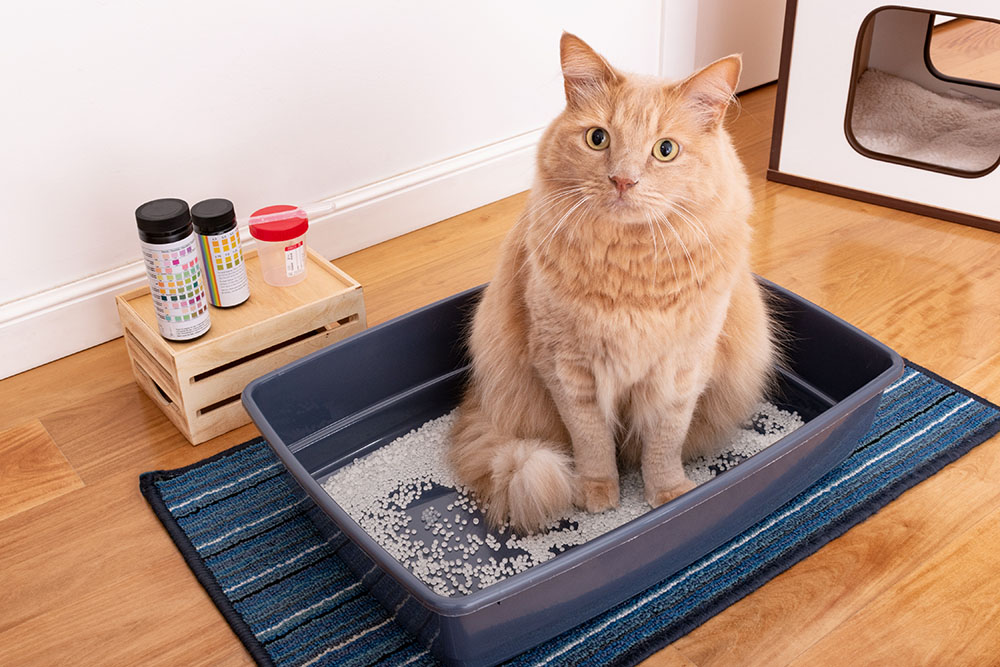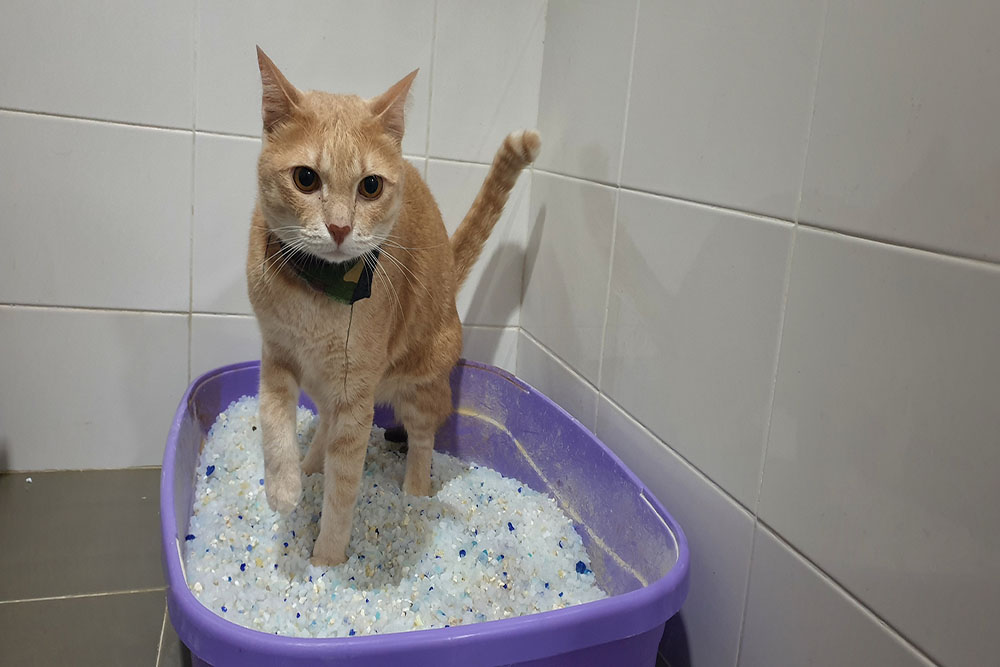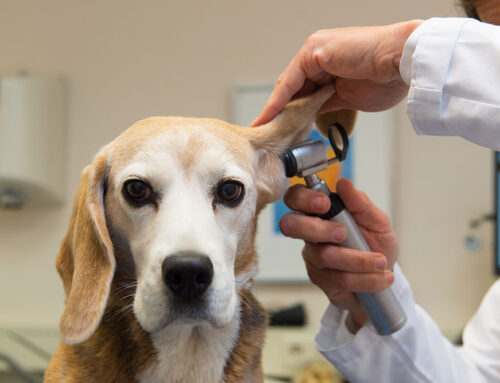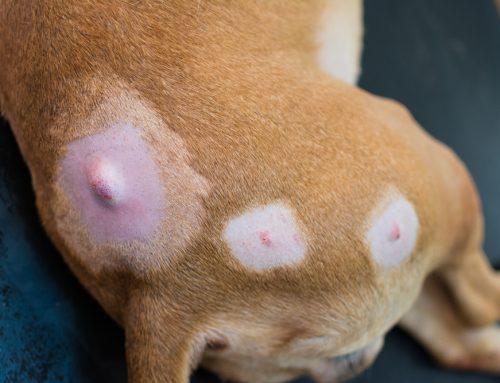Urinary Blockages in Cats: Fast Action, Lifesaving Results
You hear scratching in the litter box again. Your cat has been in and out all evening, crouching as if to go but leaving nothing behind. At first, you wonder if it’s stress or maybe constipation- but the crying, restlessness, and worried feeling in your gut tell you something is seriously wrong. These are often the first signs of a urinary blockage, one of the most urgent and life-threatening emergencies cats can face.
At Palm City Animal Medical Center, we know how alarming this situation can be, and our team is prepared with advanced diagnostics and skilled care to relieve blockages quickly and give your cat the best chance at a safe recovery.
What Is a Urinary Blockage?
A urinary obstruction occurs when the urethra is narrowed or sealed by crystals, stones, inflammatory debris, or mucus plugs so urine cannot exit the bladder. Male cats are most at risk because their urethra is longer and narrower. If flow stops, potassium rises, acids and toxins accumulate, and the bladder and kidneys suffer damage. Without prompt relief, cats can experience heart rhythm abnormalities, kidney failure, or even bladder rupture within 24 to 48 hours.
Why Blockages Happen
Crystals and Stones
Concentrated urine encourages minerals such as struvite and calcium oxalate to crystallize. Clusters can grow into stones that lodge in the urethra or move back and forth between bladder and urethra. Therapeutic diets, increased moisture, and monitoring reduce stone risk and, in certain cases, dissolve struvite.
Idiopathic Cystitis and Inflammatory Plugs
Many cats develop sterile inflammation, also known as feline idiopathic cystitis, of the bladder lining. That inflammation increases mucus production and urethral spasm, which together form soft plugs. Stable routines, enrichment, and targeted nutrition lower flare frequency while reducing the likelihood of obstruction.
Bacterial Infection and Debris
True bacterial UTIs are less common in cats than in dogs, yet when they occur they add white cells, protein, and blood that can clump into obstructive material. Learning to recognize UTI signs in cats helps owners seek care before debris accumulates.
Red-Flag Symptoms You Should Never Ignore
Call our team the moment you notice any of the following:
- Frequent litter box visits with little or no urine
- Straining, crying, or posturing without producing urine
- Lethargy, hiding, or sudden restlessness due to pain
- Vomiting, drooling, or a firm, painful abdomen
- Reduced appetite or complete refusal to eat
Even a partial obstruction can become complete in hours. If you are unsure, reach out immediately so we can advise you on immediate next steps. If you don’t know what pain in cats looks like, check out this guide to the Feline Grimace Scale.
Our Team, Tools, and Full-Service Support
From triage to recovery, your cat benefits from a coordinated team and on-site resources. Digital radiography, ultrasound, CT, endoscopy, in-house lab analyzers, and a fully equipped surgical suite are integrated into our day-to-day veterinary services.
How We Confirm the Diagnosis
When you arrive, we triage quickly and begin stabilization while confirming the cause:
- Exam and Vitals identify bladder size, dehydration, pain level, and cardiovascular stability.
- Laboratory testing evaluates electrolytes and kidney values and characterizes urine pH and crystal type. Results are reviewed in real time so treatment proceeds without delay.
- Imaging with digital radiographs reveals radiopaque stones, while point-of-care ultrasound shows bladder wall thickness, soft tissue plugs, and free fluid. Ultrasound also helps guide safe catheter placement.
Emergency Treatment: What Happens First
- Catheterization and Bladder Flushing
After pain control and light sedation, a sterile urinary catheter is placed to relieve the obstruction. We gently flush the urethra and bladder to clear crystals, mucus, and blood. Clearing residual debris lowers the risk of an immediate re-block. - Intravenous Fluids and Electrolyte Correction
Fluids rehydrate tissues, support kidney function, and correct dangerous potassium and acid–base shifts. - Pain Control and Antispasmodics
Analgesics reduce pain, and medications that relax the urethra limit spasm, which makes catheter placement easier and recovery smoother. - Close Monitoring
Hospitalization allows continuous monitoring of urine output, blood pressure, and electrolytes. We repeat labs to confirm that kidney values are normalizing before discharge.
If your cat needs medications or a therapeutic diet after release, refills and special-order nutrition are available through our in-house pharmacy, which streamlines pickup and ensures product quality.
Why Delays Are So Dangerous
Waiting to see if a cat “works it out” at home is risky. As hours pass:
- Potassium can spike, which destabilizes the heart and can lead to life-threatening arrhythmias.
- Kidneys can acutely fail, raising toxins and causing severe nausea and lethargy.
- The bladder can rupture, spilling urine into the abdomen and causing chemical peritonitis.
Cats that arrive early typically need shorter hospital stays and have fewer complications. Cats that arrive late may require multiple days of hospitalization, advanced monitoring, and sometimes surgery.
Perineal Urethrostomy (PU): Preventing Repeat Blockages
While most cats recover with medical treatment, some face repeated obstructions. In these cases, a perineal urethrostomy (PU) surgery creates a wider opening in the urethra, reducing the risk of future blockages.
- When It’s Recommended – PU is advised for cats with recurrent, life-threatening obstructions or severe urethral narrowing. Pre-op bloodwork, urinalysis, and imaging guide the plan.
- The Surgery – Performed under general anesthesia, the surgeon removes the narrowest part of the urethra and reshapes it into a larger, more stable outlet.
- Recovery – Cats typically stay hospitalized for pain control and monitoring, then rest at home with a cone, pelleted litter, and restricted activity until healing is complete.
Prevention and Long-Term Management
Hydration First
More water means more dilute urine and fewer crystals. Many cats do better when owners choose wet food to boost hydration, separate water from food bowls, offer wide dishes that do not touch whiskers, and use fountains to encourage frequent sipping.
Therapeutic Diets
Prescription urinary diets regulate pH and mineral content and, in some cases, dissolve specific crystal types. Our doctors help select a formula that aligns with your cat’s urine chemistry and history, and our pharmacy can coordinate ongoing refills.
Stress Reduction
Because stress can trigger bladder inflammation, provide vertical spaces, hiding areas, predictable play, and quiet litter box locations. Pheromone diffusers and structured enrichment lower flare frequency. A calmer home pairs well with diet and hydration changes. The Indoor Pet Initiative is a great resource for creating a feline-friendly environment.
Litter Box Optimization
Clean, low-entry boxes placed in quiet locations promote consistent use and reduce painful holding behavior. A practical, research-based resource is the comprehensive litter box guide.
Weight Management
Excess weight is a recognized risk factor for lower urinary tract disease. The Association for Pet Obesity Prevention offers body condition scoring tools and safe weight-loss guidance that we can personalize during your cat’s wellness visits.
Regular Checkups
Twice-yearly exams through our veterinary wellness care program include urinalysis, targeted bloodwork, and diet reviews. Proactive monitoring helps us spot trends early and adjust the plan before problems return.
Financial Preparedness for Emergency Care
Urinary blockages often require hospitalization, catheterization, and sometimes surgery. Because costs can add up quickly, planning ahead is essential. Pet insurance can help, but it must be purchased before your cat develops an illness, as pre-existing conditions aren’t covered.
A dedicated pet savings account is another way to set aside funds for emergencies. Even small monthly contributions can make a difference when urgent care is needed.
When to Call and How to Reach Us
If your cat is straining, crying, or not producing urine, call (772) 283-0920 right away so our staff can prepare for your arrival. For routine care and preventive planning, you can request scheduling through our website or speak with a team member about the next steps that fit your cat’s needs.
At Palm City Animal Medical Center, our mission is simple: respond quickly, treat thoroughly, and guide you with clear information you can trust. With the right plan, most cats recover well and return to comfortable, normal routines. If you have questions about urinary health, want to review preventive strategies, or need same-day help, start with our contact team and explore how our integrated veterinary services and preventive wellness program support your cat at every stage.









Leave A Comment